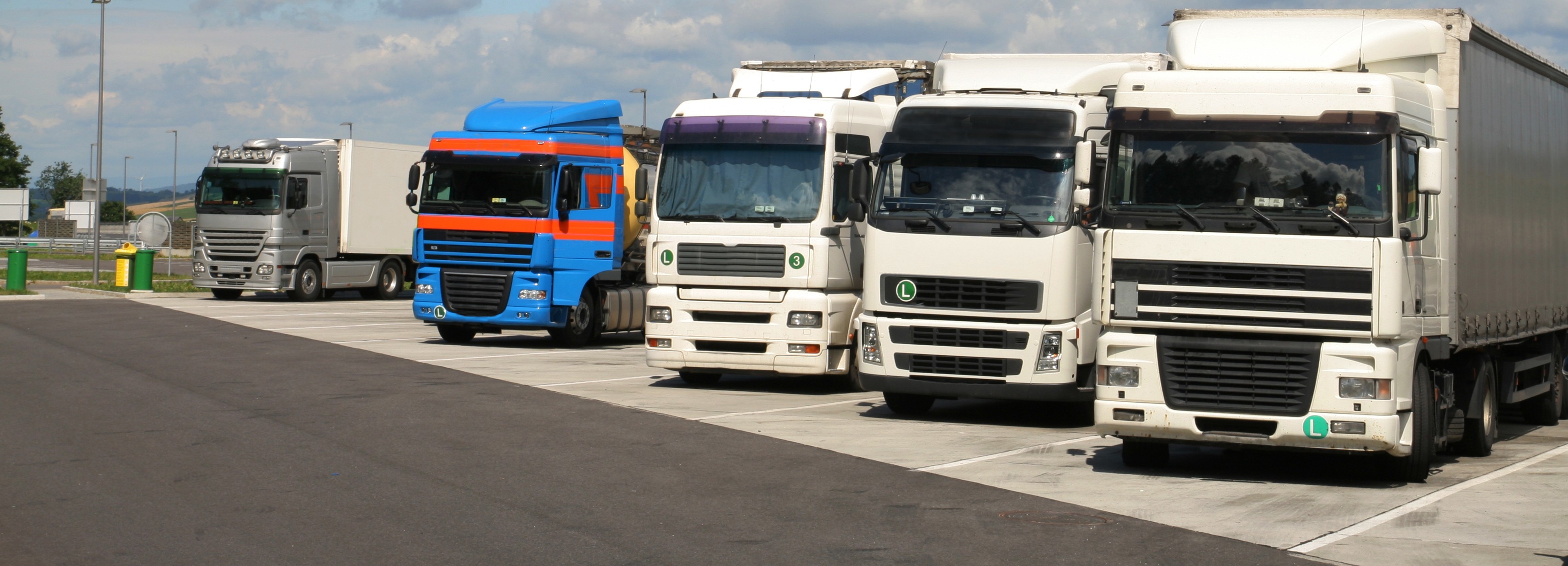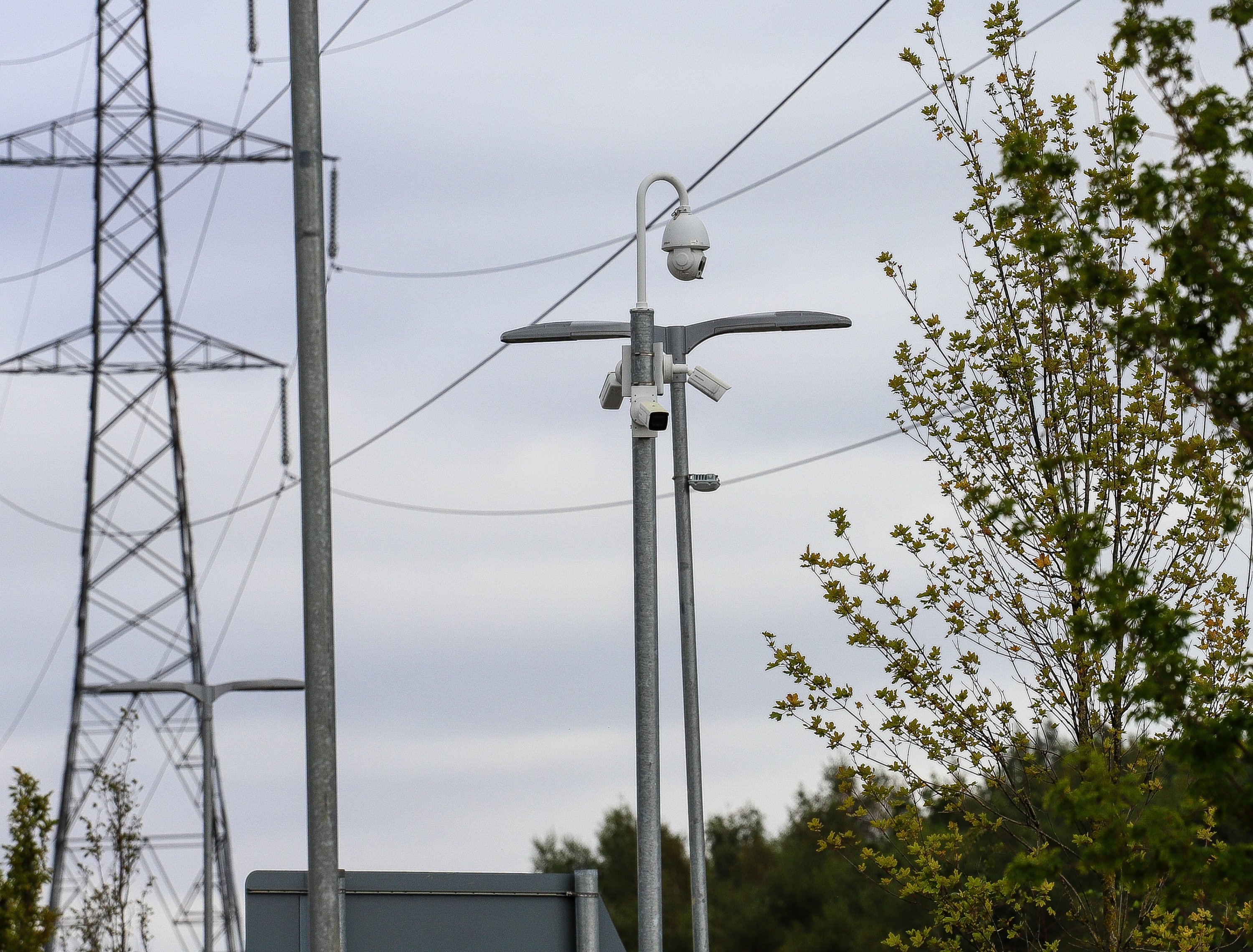
Miranda Blake
Kas laikoma saugia sunkvežimių stovėjimo aikštele? Vairuotojai pasisako
Sukurta: 09-12-2024
•
Atnaujinta: 09-12-2024
Vienas didžiausių iššūkių, su kuriais susiduria vairuotojai, - rasti saugias automobilių stovėjimo aikšteles. Pramonės priežiūros institucijų atlikta apklausa atskleidė, kad daugelis mano, jog sunkvežimių stovėjimo aikštelėse užtikrinamas nepakankamas saugumas.
Panagrinėkime įvairius aspektus, kurie padeda užtikrinti saugią sunkvežimių stovėjimo aikštelę iš vairuotojų perspektyvos, išnagrinėkime svarbiausias priemones ir patogumus. Be to, panagrinėsime bendrą aplinką, kuri skatina apsaugos jausmą.
Sunkvežimių stovėjimo aikštelių vaidmuo logistikoje
Sunkvežimių vairuotojai turi stovėti, kad laikytųsi griežtų poilsio laiko taisyklių. Be to, jiems reikalingos vietos, kuriose jie galėtų pailsėti, papildyti degalų atsargas ir atsigaivinti, nebijodami įsilaužimo ar vandalizmo (https://snapacc.com/newsroom/tips-for-keeping-your-vehicle-secure-protecting-your-truck-from-theft/). Kadangi apie 81 % krovinių vežama keliais, saugių sunkvežimių stovėjimo aikštelių poreikis iš tiesų yra labai svarbus šios pramonės šakos sėkmei.
Netinkamos priemonės gali sukelti rimtų padarinių, įskaitant krovinių vagystes, transporto priemonių apgadinimus ir asmeninio saugumo problemas. Dėl to vairuotojai dažnai reiškia nusivylimą - tai gali atgrasyti juos nuo pertraukų ir galiausiai paveikti jų veiklą kelyje.
Esminės priemonės
Pagrindinis saugios sunkvežimių stovėjimo aikštelės aspektas yra fizinių barjerų įrengimas. Tvirtos perimetro tvoros yra labai svarbios siekiant užkirsti kelią neteisėtam patekimui. Būtina įrengti kontroliuojamus įvažiavimo ir išvažiavimo taškus, pavyzdžiui, vartus, prie kurių reikia prisijungti su kortele arba kodu. Tokios priemonės gerokai sumažina įsilaužimo tikimybę ir padidina bendrą saugumą.
Taip pat būtinas efektyvus apšvietimas. Gerai apšviestos vietos atgraso nuo nusikalstamos veiklos, o vairuotojams suteikia apsaugos jausmą ir pasitikėjimo savimi, ypač tamsiuoju paros metu.
Kitas svarbus aspektas - visapusiškas vaizdo stebėjimas. Vaizdo stebėjimo kameros turėtų apimti visą automobilių stovėjimo aikštelę, kad būtų galima nuolat stebėti ir įrašinėti veiklą. Daugelis sunkvežimių vairuotojų palankiai vertina žinojimą, kad jų transporto priemonės ir kroviniai stebimi 24 valandas per parą, nes tai gali veiksmingai atgrasyti potencialius nusikaltėlius.
Apmokyti apsaugos darbuotojai suteikia papildomą apsaugos lygį. Apsaugininkai gali operatyviai reaguoti į incidentus, padėti ir būti matomi, o tai sustiprina bendrą saugumo jausmą. Sunkvežimių vairuotojai dažnai būna ramesni, žinodami, kad vietoje yra profesionalai, galintys išspręsti bet kokias iškilusias problemas.
Labai svarbu turėti lengvai prieinamas avarinio ryšio sistemas - turėtų būti avarinio iškvietimo dėžutės arba vidinio ryšio sistemos, kad prireikus vairuotojai galėtų greitai susisiekti su apsaugos arba krizių tarnybomis. Ši funkcija ypač svarbi atokiose vietovėse, kur skubi pagalba gali būti sunkiai pasiekiama.

Papildomos funkcijos
Švarūs ir gerai prižiūrimi tualetai ir dušai taip pat labai vertinami, ypač ilgų kelionių metu. Šiose patalpose turėtų būti taikomos priemonės, užtikrinančios, kad jos būtų užrakintos ir prižiūrimos - tai ne tik padidins vairuotojų komfortą, bet ir prisidės prie bendro jų saugumo jausmo.
Nors tai nėra tiesiogiai susiję su saugia sunkvežimių stovėjimo aikštele, papildomi patogumai gali gerokai padidinti bendrą stovėjimo aikštelės komfortą. Maisto ir gėrimų parinktys, belaidžio interneto prieiga ir elektros jungtys šaldytuvinėms priekaboms suteikia daugiau jaukumo. Pagrindinės techninės priežiūros paslaugos taip pat gali būti naudingos, nes sunkvežimių vairuotojai gali spręsti smulkius klausimus neišeidami iš teritorijos.
Geresnės aplinkos kūrimas
Saugi sunkvežimių stovėjimo aikštelė taip pat turėtų veiksmingai rūpintis vairuotojais. Daugelis jų pasidalijo, kad tam tikrose vietose jie jaučiasi nepakankamai vertinami, o tai gali turėti neigiamos įtakos jų patirčiai. Tos, kuriose su sunkvežimių vairuotojais elgiamasi pagarbiai ir kur tvyro draugiška atmosfera, skatina pakartotinius apsilankymus ir stiprina lojalumą.
Norint tai pagerinti, būtina investuoti į darbuotojų mokymą. Darbuotojai turėtų suprasti unikalius sunkvežimių vairuotojų poreikius ir žinoti, kaip puikiai aptarnauti klientus.
Vairuotojų rūpesčių sprendimas
Svarbu žinoti, kad moterys vairuotojos, kurios sudaro nedidelę sunkvežimių vairuotojų darbo jėgos dalį, dažnai susiduria su papildomais saugos iššūkiais. Daugelis moterų praneša, kad jaučiasi nesaugiai aplinkoje, kurioje vyrauja vyrai, ypač kai sunkvežimių stotelėse trūksta tinkamų saugumo priemonių - labai svarbu atsižvelgti į konkrečius jų poreikius ir imtis priemonių, kad jos būtų ir saugios, ir laimingos.
Kitas aspektas - kai kurie sunkvežimių vairuotojai turi specifinių mitybos poreikių. Taigi, sveiko maisto pasirinkimas ir įvairių mitybos reikalavimų tenkinimas gali pagerinti jų patirtį ir prisidėti prie teigiamos vairuotojų savijautos.
Saugios sunkvežimių stovėjimo aikštelės ateitis
Tokios naujovės, kaip išmaniosios stebėjimo sistemos, automatinė įėjimo kontrolė ir stebėjimas realiuoju laiku, gali gerokai pagerinti priemones. Į tokius sprendimus investuojančios sunkvežimių sustojimo aikštelės turi daugiau galimybių pritraukti daugiau transporto priemonių parkų ir vairuotojų, ieškančių saugių galimybių.
Sprendžiant šios srities uždavinius reikia įvairių suinteresuotųjų šalių, įskaitant vyriausybines agentūras, logistikos bendroves ir automobilių stovėjimo aikštelių operatorius, bendradarbiavimo. Bendradarbiaudamos šios grupės gali parengti išsamias strategijas, kurios pagerintų sunkvežimių vairuotojų saugumą ir visą jų patirtį.
Norint sukurti saugesnę aplinką, labai svarbu pasisakyti už politikos pokyčius, kuriuose pirmenybė teikiama vairuotojų poreikiams. Pramonės organizacijos ir advokatų grupės gali atlikti svarbų vaidmenį didinant informuotumą apie saugių sunkvežimių stovėjimo aikštelių svarbą ir reikalaujant teisės aktų pakeitimų, kurie padėtų gerinti infrastruktūrą.
Rasti saugias paslaugas
SNAP teikiame pirmenybę vairuotojų saugumui ir padedame sunkvežimių stovėjimo aikštelėms tai užtikrinti per savo specialų prieigos ir saugumo skyrių. Nuo ANPR kamerų ir programinės įrangos iki mokėjimo terminalų, užtvarų, įvažiavimo sistemų ir CCTV kamerų sistemų - mes įdiegsime viską, kad geriausiai apsaugotume sunkvežimių vairuotojus, transporto priemones ir krovinius sunkvežimių stovėjimo aikštelėse, MSA, automobilių parko depuose ir kitur.
Daugiau informacijos apie SNAP Access & Security čia arba apie kitas mūsų paslaugas (pvz., automobilių stovėjimo aikštelę ir plovyklą) galite sužinoti SNAP svetainėje.



